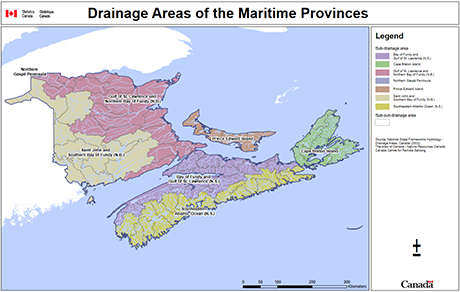The work of MAARS covers aquatic activities in all watersheds that empty into and encompass the Southern Gulf of St. Lawrence, Scotian Shelf and Bay of Fundy.
The bond and use of a very large and dynamic area of coastal waters, bays, inlets, rivers, estuaries, tributaries and tidal waters and the aquatic life in them, by the traditional ancestral homelands communities of Mi’Kmaq, Malecite, Passamaquoddy Aboriginal Peoples in the Maritime Region has a long history and continuum.
The recent history of participation by Aboriginal Peoples in aquatic resource access can be measured by the involvement of Aboriginal harvesters and by the evolving relationship between Fisheries and Oceans Canada and our community of Aboriginal Peoples in the Maritime Region.
From 1985 onwards, each of the MAARS Native Council partners has had different levels of growth and activity in both communal Aboriginal sustenance fisheries and Aboriginal communal commercial fisheries. The participation in aquatic resources access and use is managed for the communal, social and economic development of the respective traditional homeland communities in the Maritime Region.
The partner Native Councils established MAARS for decision making governance about aquatic resources, oceans management, and commercial fishing industry planning throughout all the watersheds in the region. Collectively, the respective Councils’ communities throughout the Maritime Region have a position and growing involvement in communal commercial fisheries in all the watersheds and drainage basin areas of the Maritime East Coast.

